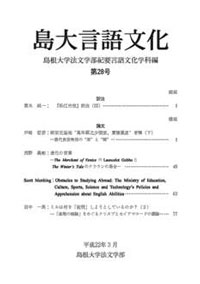島根大学法文学部
ISSN:1342-3533

ダウンロード数 : ? 件
この文献の参照には次のURLをご利用ください : https://ir.lib.shimane-u.ac.jp/3101
島大言語文化 : 島根大学法文学部紀要. 言語文化学科編 1
1996-07-31 発行
Discourse factors and temporal sequencing in classical Sanskrit narrative texts
Tsiang-Starcevic, Sarah Y
現代英語構造論研究室
ファイル
内容記述(抄録等)
This paper will consider the role of discourse factors in the way temporal sequences are expressed in a seiection of classical Sanskrit narrative texts. The term 'temporal sequence' is used to refer to the presentation of situations and events occurring in series over time as indicated by the temporal relationships holding between them. Therelationship may be one of simultaneity or near-simultaneity('when-at that time','when-after this')or represent alooser sequential reiationship of subsequent actions following anterior ones. Or,some states or actions may be ongoing in relation to others. Such sequences are maimly indicated in Sanskrit narrative using finite verbs and non-finite verbs which may occur in combination with them,and with sentence adverbials. In some cases,events in series are presented within reiative clause-main clause constructions. In this investigation,the comparative usage of different types of syntactic construction for the purpose of presenting temporal sequences wiii be examined in light of their suitability within particular discourse contexts.
About This Article
Other Article
